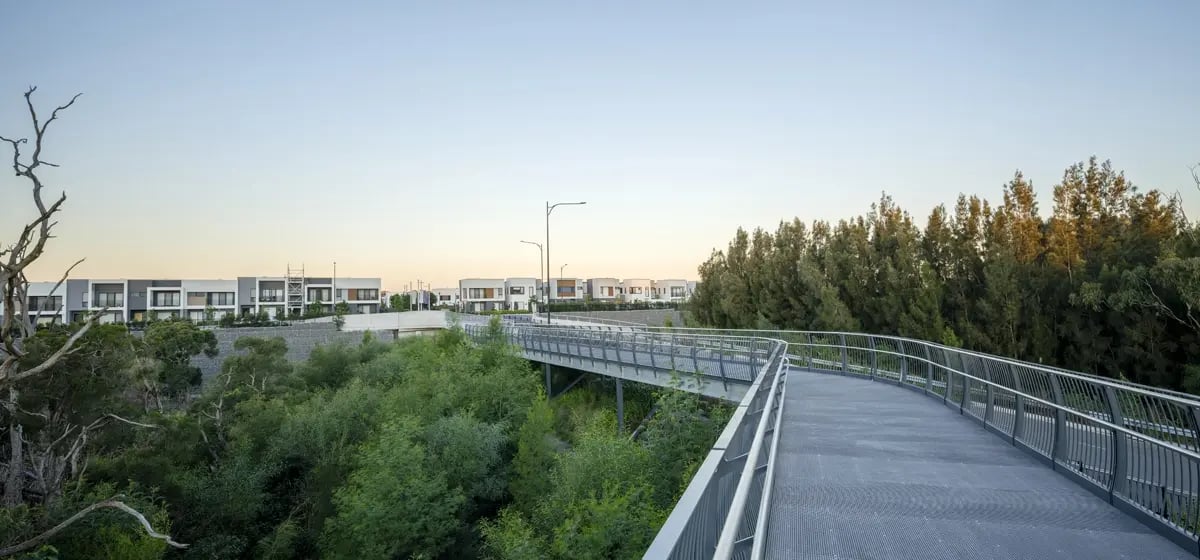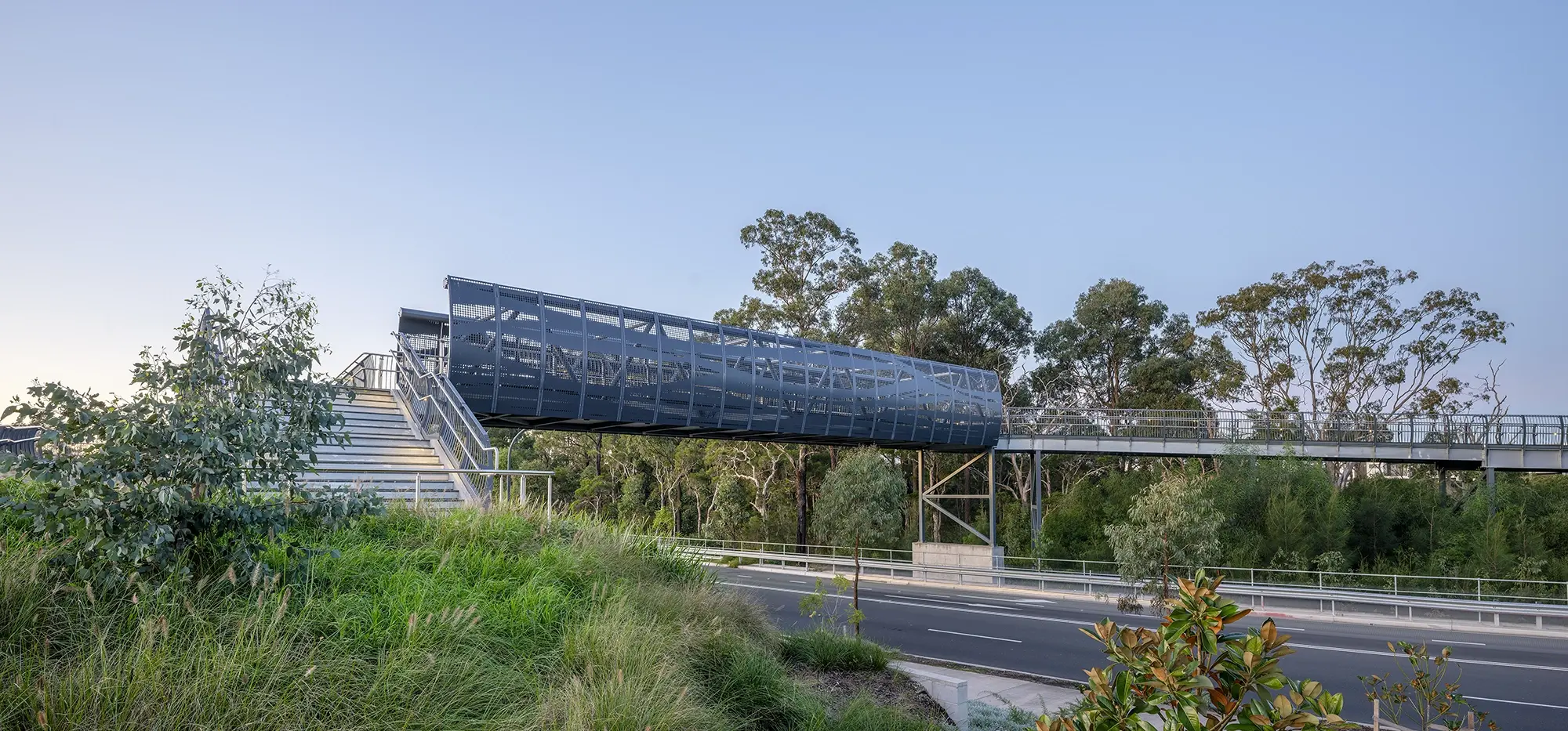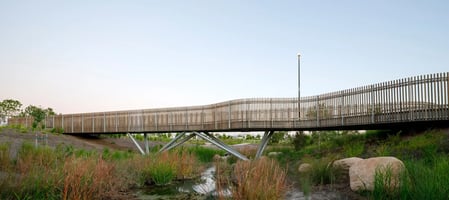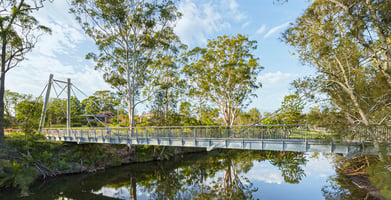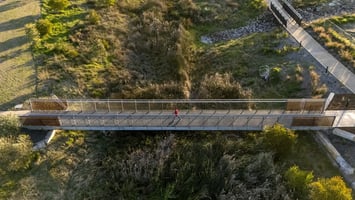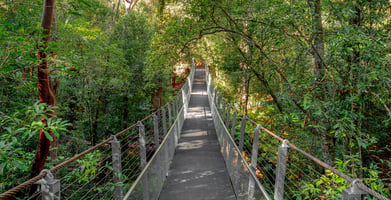Aura Brook’s new community bridges provide safe access to conservation areas within Stockland’s...
Brickmakers Drive Bridge
- Client
- Mirvac
- State
- New South Wales
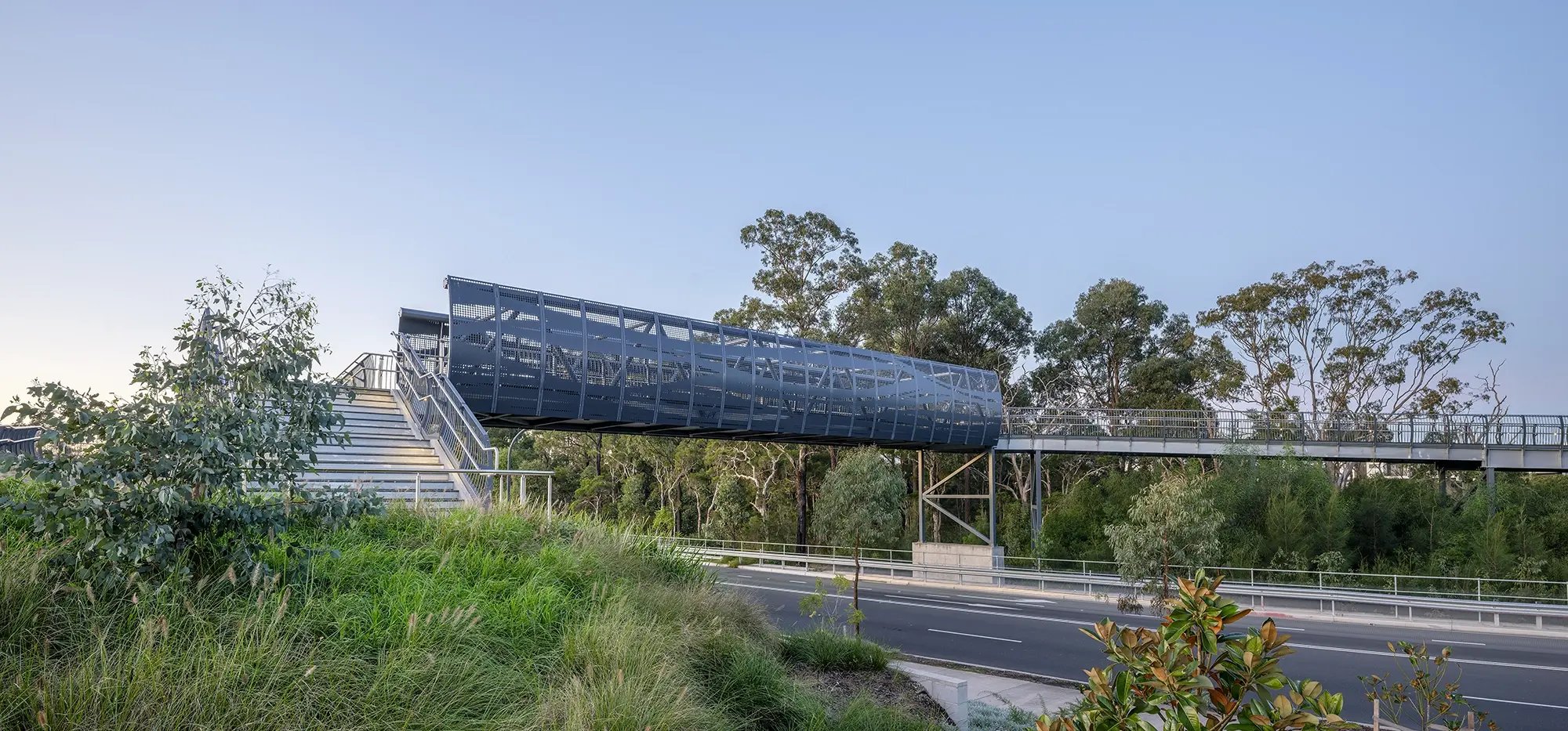
Spanning roads. Bridging stakeholders.
George’s Cove is a major residential community being delivered by Mirvac at Moorebank in Sydney’s south-west. Before granting approval for a new release of dwellings, Liverpool City Council required Mirvac to install a flood evacuation route connecting George’s Cove to nearby Paine Park on the other side of bustling Brickmakers Drive. Mirvac had already received a proposal from another civil contractor, however their bridge design (100% concrete) was deemed to be excessive, both in terms of size and cost.
Having collaborated on many previous access projects, Mirvac instead reached out to FORGE (formerly Fleetwood Urban). We worked together to explore more cost-effective options, scoping out an alternative bridge and boardwalk design and lodging a new DA. Following several rounds of revisions with Council and the RMS, the DA was approved using modified versions of FORGE’s inhouse LONGREACH truss bridge and BALMORAL boardwalk systems. The project then moved straight into fabrication, with FORGE appointed the lead contractor.
The 80-metre eastern section of the approach boardwalk was installed first, followed by the 75-metre western boardwalk and main 24-metre truss bridge. The project was finalised with handover from Mirvac to Liverpool City Council soon after.
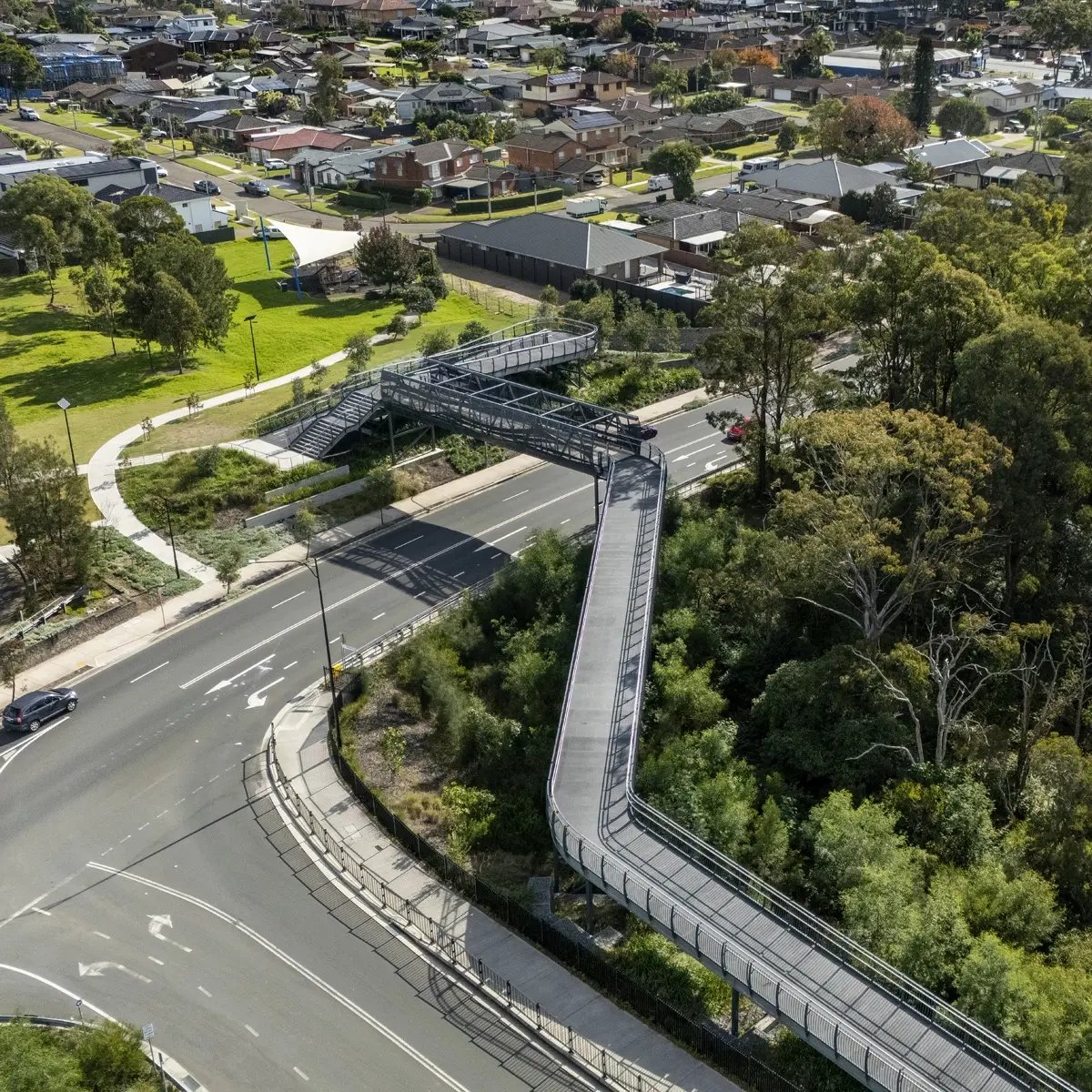
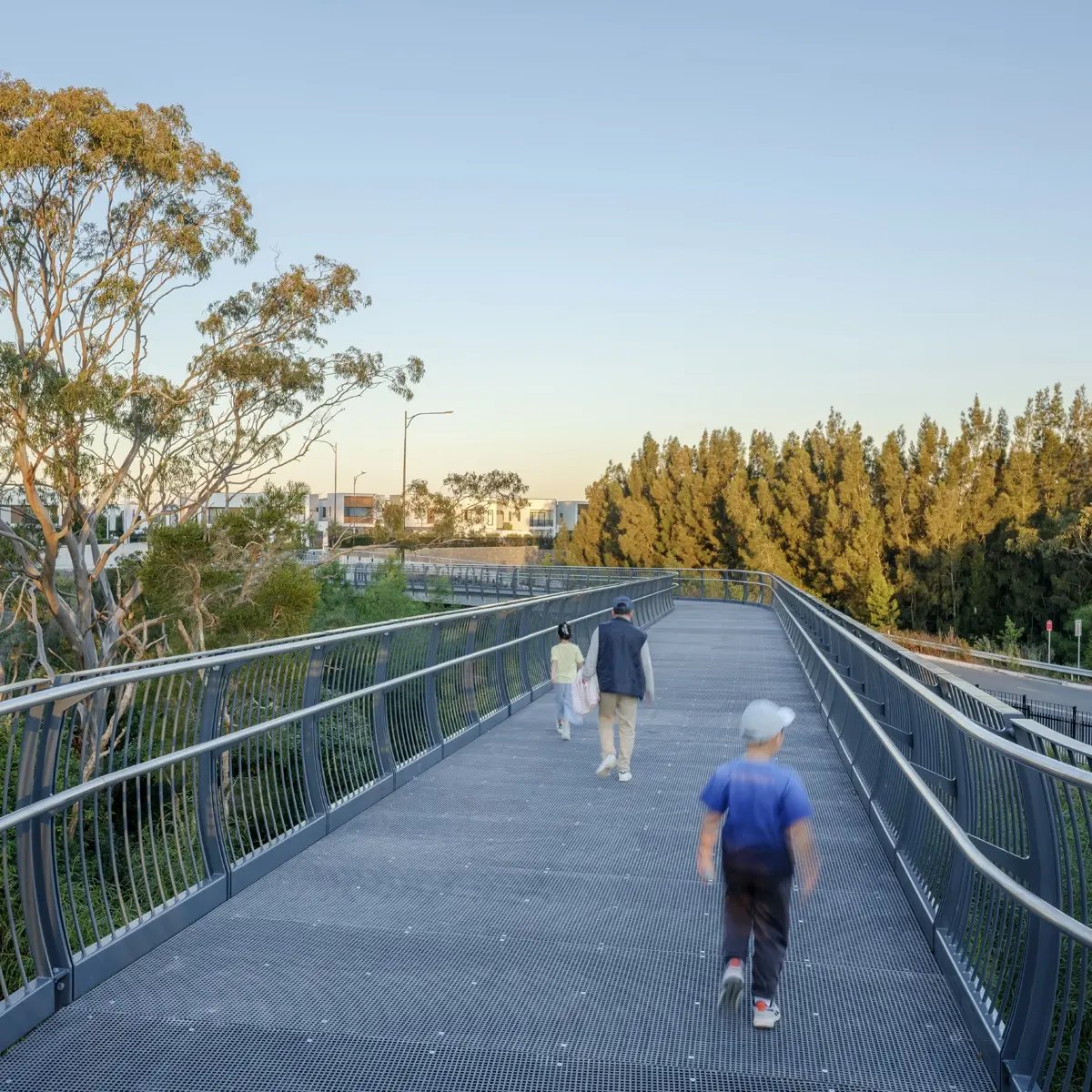
Our involvement.
FORGE was originally engaged for a small design fee to explore alternatives for a flood evacuation bridge and boardwalk, as mandated by Liverpool City Council. Mirvac was especially keen to deliver the required structures in the most cost-effective way possible.
Working across multiple stakeholders – and different DAs for different parts of the George’s Cove development site – we landed on a preferred design based on our inhouse LONGREACH truss bridge and BALMORAL boardwalk systems. Once approved by Council, we were then contracted directly by Mirvac to lead the construction and installation phases, with fabrication beginning immediately.
The two approach boardwalks were manufactured and pre-assembled offsite in sections. However, the main truss bridge was too large and heavy for an escort load, so it needed to be preassembled on-site at Brickmakers Drive, before being installed with a carefully planned night lift.
The end result was fantastic success for both the George’s Cove community and Mirvac who, within just weeks of competition, had already engaged us to scope new designs for another nearby development in south-western Sydney, Riverlands.
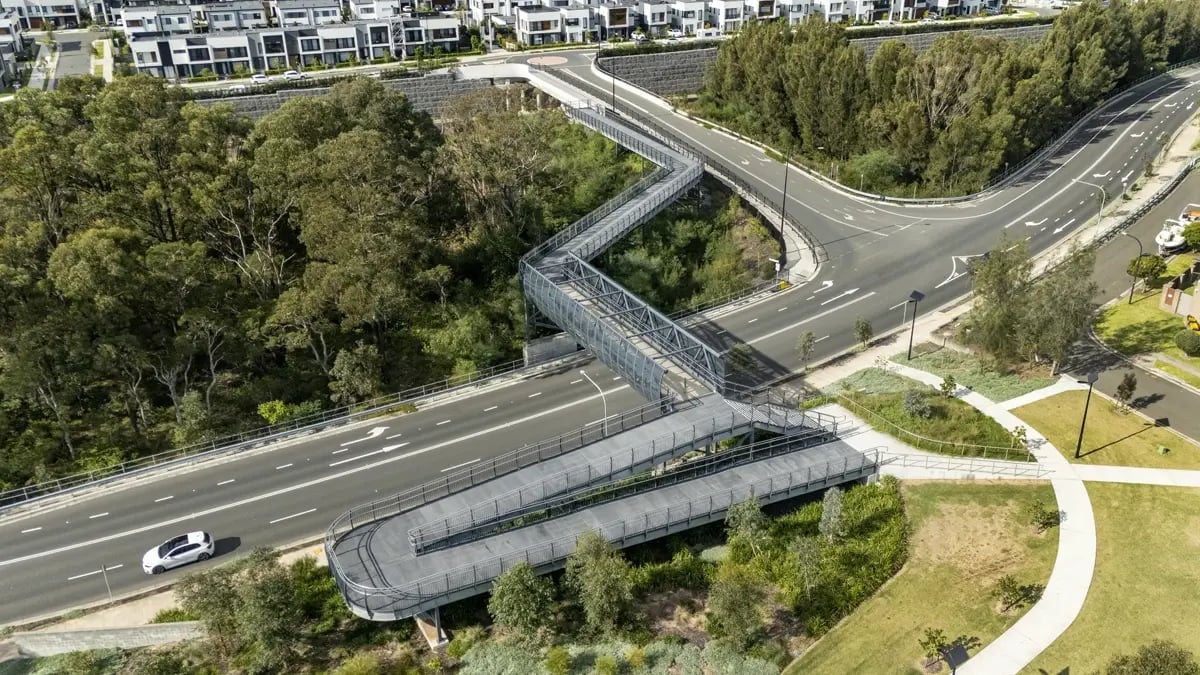
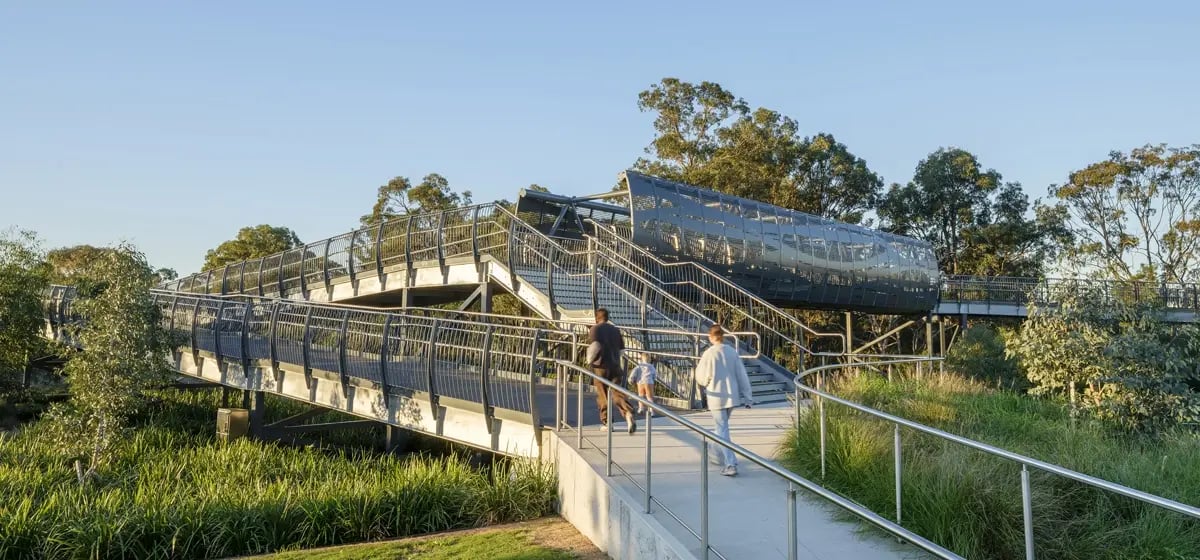
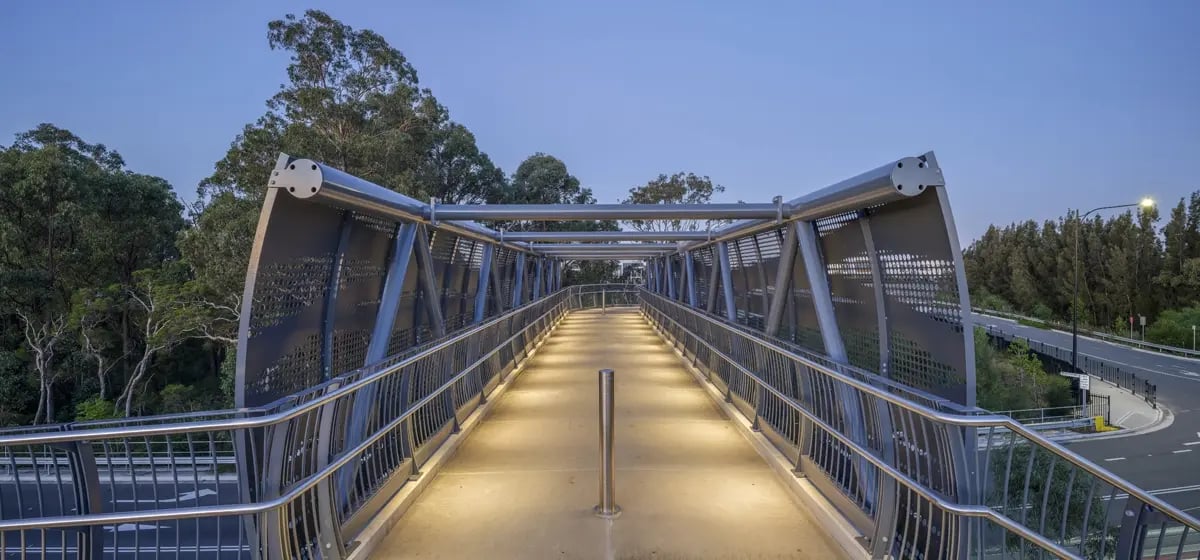
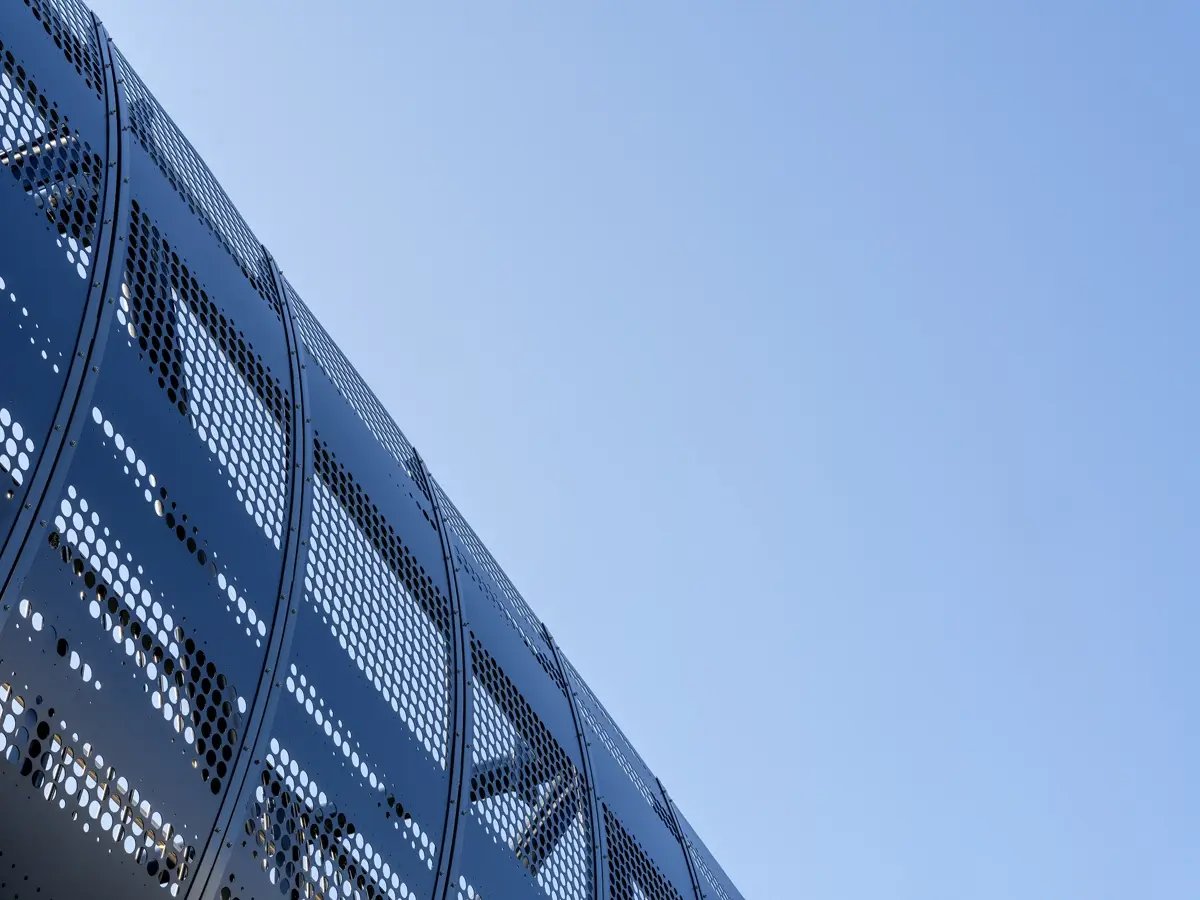
Design Challenge
A deceptively complex design project, there were many factors to be considered. As a starting point, the new bridge and access ramps needed to meet Liverpool City Council’s strict flood safety requirements.
Given it passed directly over a major arterial road, several additional compliance requirements were stipulated by the RMS under AS5100, including the use of concrete decking for key sections. Mirvac also expressed a strong commercial desire for us to deliver the lightest and most cost-efficient solution possible (something that led us to propose a steel frame/girder substructure instead of concrete with lightweight FRP decking used on the approach boardwalks).
Achieving all of these things in an aesthetically pleasing structure required considerable design and materiality exploration, with multiple rounds of renders and revisions.
Construction Challenge
The exposed clay site put our delivery team at the mercy of the elements. Stripped of all grass it was virtually impossible to work when it rained. To minimise community disruption, a night lift was also identified as the best option for installing the main pedestrian truss bridge across Brickmakers Drive – no small task for a 70-tonne structure requiring a 500-tonne crane.
Following many weeks of detailed planning, the outcome was perfect. The 24-metre concrete bridge was fully assembled on site and craned into position in one night, taking literally 10 minutes to bolt into its final position.
Innovations
With the bridge in use 24-hours a day, lighting was an important consideration. Our design team created an innovative new interface that integrated the handrail lights within the main structure. The result was a standardised design for the balustrade post that allowed cables to run internally, providing a safe and seamless visual finish. It was so successful we now use the same design on other access projects.
Features
- 32-metre multi span pedestrian & cycling shared bridge (3-metre wide) with architectural curved timber balustrades
- 27-metre multi span pedestrian & cycling shared bridge (3-metre wide) with architectural curved galvanised steel balustrades
Materials
- Stainless steel
- Galvanised steel
- Class 1 hardwood timber (locally sourced)
- FRP decking
- Stainless steel handrails
Safety & Risk Considerations
A comprehensive Safety in Design report was completed as part of the original submission to Liverpool City Council. This allowed us to identify, and then mitigate, numerous potential risk factors including the busy worksite alongside Brickmaker’s Drive and the need for harness work when connecting the main bridge structure. Throw screen apertures and lift studies were also detailed as part of the RMS compliance process. Mirvac conducted its own safety audit before bridge was installed, with the project registering impressive 94% safety score.
Sustainability Considerations
